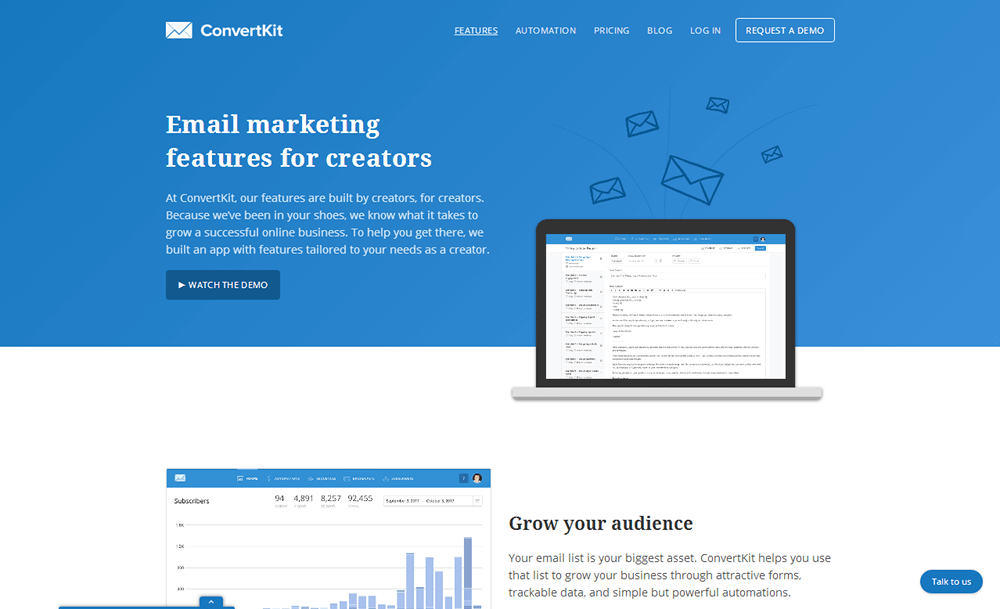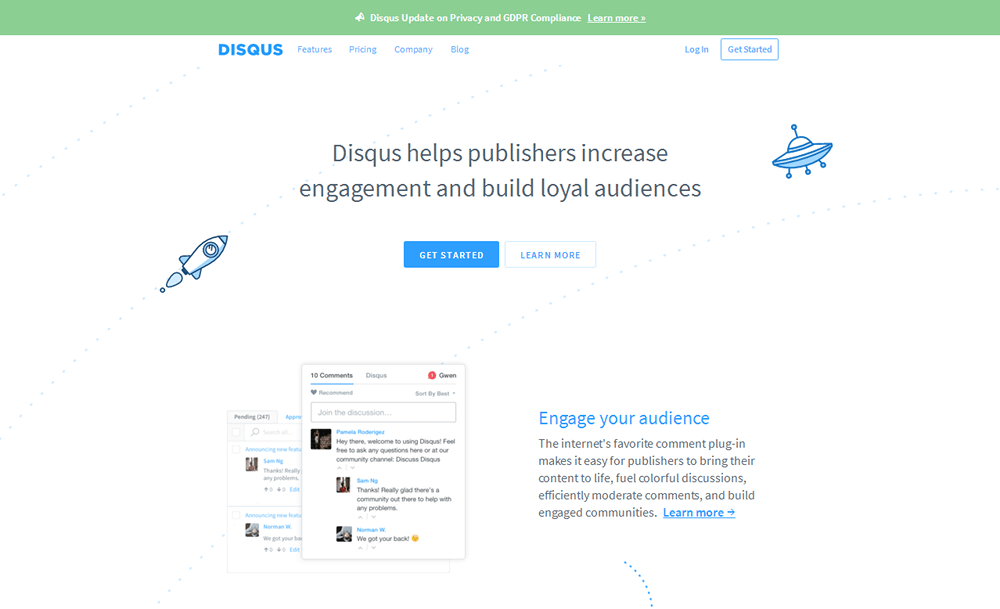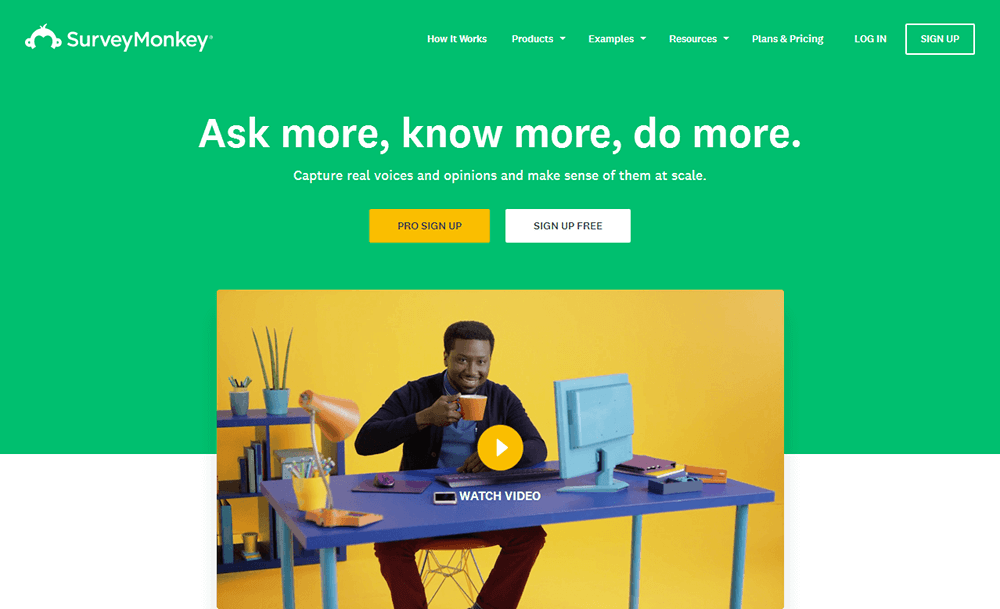Creating a product is an important phase in the lifespan of an online business. It helps you transition from a blog that relies on income generated from other businesses to a self-sustaining business in complete control of its own destiny. You’ve worked hard publishing content, promoting that content, building your following on social media and growing your email list. All of that has helped you increase the amount of traffic your site sees as well as the amount of “raving fans” you have. Now, it’s time to reap the benefits of all of that hard work.
Growing a following before you launch your first product gives you an opportunity (or at the least possibility) of having an extremely successful product launch. In this post, we’re going to go over how you can go about determining what your first product should be. We’ll cover a few reasons why you might want to begin this phase in your business, how to find a problem for your product to solve and which type of product would provide the best solution to that problem. Let’s get started.
Why are You Creating a Product for Your Blog?
The phrases “revenue” or “to make money” probably popped into your head as answers to this question. While products, such as books and online courses, have tendencies to generate thousands and even tens of thousands of dollars for bloggers, that’s not the only reason why they’re important. You probably generate revenue through affiliate marketing and sponsorship deals at this point in time, but these two sources of revenue present a problem—they force you to rely on income from other businesses.
While this won’t be an issue for many blogs nor should you give up a healthy source of revenue, having it be your only source of revenue can put you in a vulnerable position should that source of revenue ever falter. For example, what if the company who makes one of your highest-earning affiliate products goes out of business or decides to shut down their affiliate program? That’s one source of revenue, one you’ve built up through dozens of blog posts, lead magnets and other forms of content, gone in one fell swoop.
Plus, what if the company you’re affiliated with starts receiving countless numbers of poor reviews and testimonials from your readers or you find a superior product? You may find yourself obligated to continue supporting that company based purely on the amount of revenue they generate for your business.
It’s different with your own products. You don’t need to worry about whether or not someone else’s business decisions are going to affect the way your business supports itself nor do you need to endorse a product you don’t truly believe in. It gives you freedom and provides a way for you to be in complete control of the fate of your own business.
Let’s go over two additional reasons why you may want to create a product.
Provide More Value to Your Audience
Products allow you to provide more value to your audience in new and interesting ways. Let’s use an ebook or physical book almost big enough to be considered a textbook on a particular topic as an example. Sure, if you dig through the blog posts, cornerstone articles and free resources you’ve created, you could probably scrounge up enough information to match the amount of information available in your book.
However, all of this information is scattered throughout your website in a way that makes no logical sense. A book allows you to present that information in a way that flows better, is much easier to consume and allows you to learn about a topic in a much more efficient manner.
Let’s use an online course complete with video content as a second example. You may be able to provide more information and present that information using a logical flow that helps your student accomplish a goal more effectively. Plus, video content (or audio content) may engage some of them much more effectively than text ever could.
Solving a Problem with One Solution
All of this leads me to my final point. Products give you the ability to solve a problem with a specific, all-in-one solution. Let’s use that book as an example again. Before, your reader would have to sift through your archives, if they even know what is they’re supposed to be looking for, read through long cornerstone articles, and even download and read through a few free resources to solve their problem.
Many, in fact, will and don’t mind going through all of that trouble given the fact that all of that information was provided to them free of charge. However, some of your readers don’t want to make that kind of time and are much more willing to pay for the added bonus of convenience. These are the types of readers who are most likely to become customers because they prefer to have their problems solved with clear-cut solutions.
With that said, let’s go over the importance of starting the product creation process by finding a problem to solve.
Starting with a Problem to Solve

Many bloggers fall into the trap of doing deep research on the top blogs in their niches and trying to emulate everything they do. The problem with this? They aren’t able to replicate the same results for their own blogs. Don’t fall into the same trap.
It’s easy to see how a blog operates on the surface, but you have no idea what goes on behind the scenes. You don’t know that blog’s team size, how they reach out and get referrals from other blogs, or even what their workflow is like. The road to success encompasses a multitude of different factors that, once again, are incredibly hard to replicate. This is why you shouldn’t create your own version of a product your competitor has found success with.
You also shouldn’t create a product simply because you “think” it might be successful. Gut instinct means very little in online business. Instead, you should listen to your readers and try to align your products with the problems they’re facing. While many consumers buy what they want when it comes to entertainment niches, most prefer to buy what they need everywhere else.
What you want to do is create a product that fulfills their needs. In other words, create a product that targets your reader’s biggest pain point.
Pinpointing Your Audience’s Pain Points
The easiest way to find out which problems your audience is having is to pinpoint the problems they’re having by getting the information from them directly. There are a number of different ways you can do this. Here are the ones we’re going to focus on:
- Having real conversations.
- Asking your email list.
- Paying special attention to your inbox.
- Recognizing trends in your blog.
- Running a survey on your site.
Let’s go through each of these.
Having Real Conversations

This is one of the most effective methods you can use to find out what your audience’s biggest problems are. Asking them directly takes out all the guesswork that tends to accompany the other four methods. Reach out to them, and have one-on-one conversations with them on their terms, be it Skype, email, Twitter DMs or even by phone.
Start with the comment section on your blog as well as your social media accounts. Take a look at the comments and replies you’ve received in search of candidates you can have real conversations with. Look for commenters who have already expressed problems they’re facing at the most. Look for commenters who have left insightful comments at the least.
I would advise you not to send direct emails to specific subscribers from your email list. This may be seen as a privacy violation as they opted into receiving marketing messages, not direct, one-on-one emails sent to them unprompted. Instead, send a broadcast email to your entire list or a specific segment you’ve created asking if any of them would be willing to have a direct one-on-one conversation with you to discuss the problems they’re facing in your niche. Be sure to point out the discussion can take place on their terms.
Asking Your Email List

This method kind of ties into the last point I made in the previous method. However, instead of asking your subscribers if any of them would be willing to have a one-on-one conversation with you, ask them to answer one simple question:
What’s the hardest part about [insert your niche here]?
Here are a few examples using different niches:
- What’s the hardest part about starting a blog?
- What’s the hardest part about learning how to skateboard?
- What’s the hardest part about being a freelance photographer?
- What’s the hardest part about fly fishing?
Send the question as a broadcast email to your entire list. You can also add it to the autoresponder series that welcomes new subscribers to your list. Be sure to add a short yet effective build up to the question, such as by briefly discussing a struggle you personally faced when you were new to your niche.
Paying Special Attention to Your Inbox

Once again, this method ties into the last two methods. While asking your readers what problems they’re facing directly is a much more effective way of obtaining the information, some readers provide the information without being prompted. What I mean is, some of your readers will mention problems they’re facing or ask you questions in your comment section, your contact email address (or email form) as well as social media.
Start paying attention to your inboxes (or wherever you manage your comment section), and start recording all of the problems your audience mentions.
Recognizing Trends on Your Blog

Your blog’s most popular content gives you insight into the biggest problems your audience is facing. For example, if you have a blog that teaches people how to skateboard and “How to Land Your First Ollie” is your most popular post according to your analytics, you can safely come to the conclusion that learning how to ollie is a big pain point for a good portion of your audience.
You can also see which posts of yours have received more social shares than others. If you don’t use a social sharing plugin that has a reporting feature that tells you which posts have received the most social shares, run your site through an app like BuzzSumo.
Running a Survey on Your Site

This method may not help you pinpoint pain points as accurately as the other methods, but it will help you understand your audience a little better. Use a brief survey to learn where your readers are at in your niche. For example, that hypothetical skateboarding blog I mentioned earlier could use a survey to ask “Which skateboard tricks do you know?” with a list of tricks the reader can select as well as a score they can use to grade themselves on each trick. This will help the blogger understand which tricks their audience knows but needs help on and which ones they still need to learn.
Come up with a short, 10-question-or-less survey you can ask your audience to fill out. You can even ask your “What’s the hardest part about…” question, just make sure it’s optional in case some of your readers don’t feel like answering anything other than multiple-choice questions.
Coming Up with a Product Idea
Once you’ve gone through each of these methods, you should have a decent-sized list of all the problems your audience is facing as well as a better understanding of where they are in your niche. Now, it’s time to choose a single problem to focus on. Start by taking a look at your survey results to see who makes up the majority of your audience. Are they new to your niche, or do they have a bit of experience? Having this information will help you know which problems to focus on.
Hopefully, you were able to see a few recurring trends in the responses you received from your audience and have a list of problems multiple readers expressed to you. Go through each of them, and consider which one(s) you could build an entire product around. For example, “learning how to ollie” may be a recurring problem the audience of that skateboarding blog is facing, but an entire book or course on how to ollie would be a tough sell given the number of 10-minute YouTube videos there are that show you how to do just that.
Once you have a much smaller list of problems you want to target, start brainstorming solutions for them. Books, ebooks and online courses are the most popular and cost effective product solutions for bloggers, but you can also create a physical product, host an event, create a private membership site or sell a digital subscription of some kind.
The rest is up to you and your audience. It should go without saying, but don’t bankrupt yourself trying to create your first product. If you have a small budget, stick with books and courses. All you need to do is choose a product idea you have the abilities and budget to tackle as well as one that targets one of the biggest concerns your audience has.


